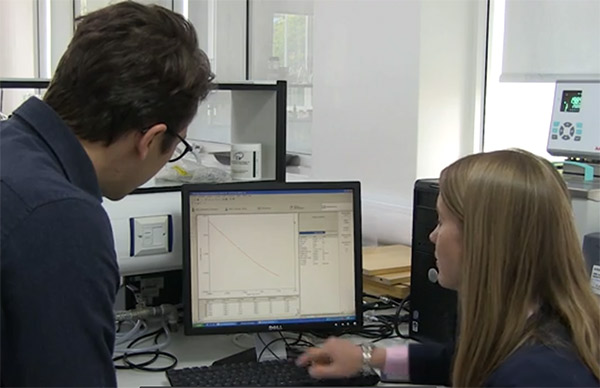University of Birmingham researchers say they have used extracellular vesicles (EVs) to repair damaged tissues in a manner that simulates the body's natural healing process. Their paper (“Annexin-Enriched Osteoblast-Derived Vesicles Act as an Extracellular Site of Mineral Nucleation within Developing Stem Cell Cultures”), published in Scientific Reports, illustrates a novel method to bone regeneration—stimulating cells to produce vesicles that can then be delivered to facilitate tissue regeneration.
“We sought to define the capacity of EVs derived from mineralising osteoblasts (MO-EVs) to induce mineralisation in mesenchymal stem cell (MSC) cultures and delineate the underlying biochemical mechanisms involved. Strikingly, we show that the addition of MO-EVs to MSC cultures significantly (P < 0.05) enhanced the expression of alkaline phosphatase, as well as the rate and volume of mineralisation beyond the current gold-standard, BMP-2 [bone morphogenetic protein 2]. Intriguingly, these effects were only observed in the presence of an exogenous phosphate source," wrote the investigators.
“EVs derived from non-mineralising osteoblasts (NMO-EVs) were not found to enhance mineralisation beyond the control. Comparative label-free LC-MS/MS [liquid chromatography-tandem mass spectrometry] profiling of EVs indicated that enhanced mineralisation could be attributed to the delivery of bridging collagens, primarily associated with osteoblast communication, and other non-collagenous proteins to the developing extracellular matrix. In particular, EV-associated annexin calcium channelling proteins, which form a nucleational core with the phospholipid-rich membrane and support the formation of a pre-apatitic mineral phase, which was identified using infrared spectroscopy. These findings support the role of EVs as early sites of mineral nucleation and demonstrate their value for promoting hard tissue regeneration.”
The researchers believe their study represents the first step down a new path for tissue regeneration with the potential to help repair bone, teeth, and cartilage. They point out that current methods have important limitations; i.e., autologous grafts cannot meet demand, they cause patient morbidity, allogeneic bone lacks bioactive factors, and growth factor-based approaches (e.g., BMP-2) may have serious side-effects and high costs. .
This team's technique delivers all the advantages of cell-based therapies but without using viable cells, by harnessing the regenerative capacity of EVs that are naturally generated during bone formation, according to Sophie Cox, Ph. D., from the School of Chemical Engineering, adding that the scientists have demonstrated in vitro that if EVs are applied in combination with a simple phosphate the therapy outperforms the current gold standard, BMP-2.
“Though we can never fully mimic the complexity of vesicles produced by cells in nature, this work describes a new pathway harnessing natural developmental processes to facilitate hard tissue repair,” she said.







